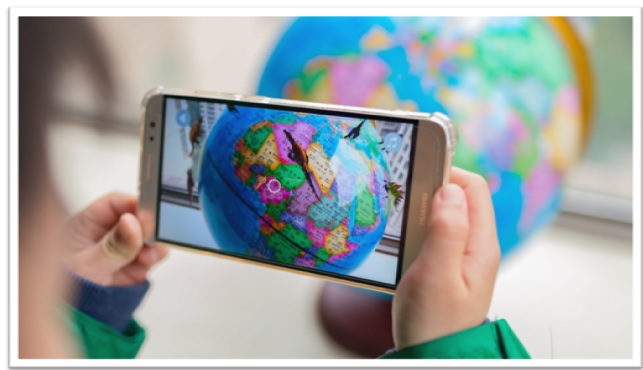
When outstanding digital overlays, touch-based feedback, and other kinds of technologies are blended with real environments, it gives rise to augmented reality. Technologies showcased in Hollywood films such as “The Matrix” increasingly seem real due to the advances in work done by software and hardware engineers. An example of a popular game that makes use of augmented reality is Pokemon Go.
In Pokemon Go, players can take a look at things around them using their smartphone cameras while game items such as game scores, the elusive Pokemon creatures, and screen icons were visible as overlays, making it seem as though the same items were around them. The augmented reality technology appeared so immersive that it even made children (and even adults) walk to search for virtual prizes in their very own backyards, often in an absent-minded fashion.
Current uses of augmented reality
Here’s how the services of an augmented reality company in Dubai are being used in the world:
- Augmented Reality (AR) apps are being used by sports media to draw imaginary lines that analyze play in different games
- AR can superimpose a different route as compared to the one being used on a GPS-enabled map, often helping to decipher the shortest route
- Fighter pilots can see a projection of speed, altitude and other vital data on their helmet visors when inside their planes. Since they do not have to look down at the gauges, it helps them focus better on the task at hand.
- A projection of the brain with AR is very helpful for accurate brain surgery
- While pointing the cursor towards a historic spot, an AR-based application is able to pop out historic information about the place. This is an example of AR being used in education.
The use of AR in education
One of the major disruptions in the world of education world has been digitalization. Children are no longer interested in the traditional classroom learning, and this phenomenon can now be observed in most parts of the world. Simply reading texts and learning from books clearly does not interest students any more. A lot of children have smartphones, and one must look at tapping into the potential of the same hardware by building AR apps for education.
Though still relatively new in the education field, AR has the potential to improve the quality of education in the following ways:
- Quick learning- Information can be added to any of the objects on screen using AR. This certainly helps make a geography class more fun, as an example, where country maps, physical features such as mountains and rivers, and historical origins of continents can be viewed on screens. Using videos and images here will certainly help kids learn fast.
- Realistic interactions– Now students can interact with images on screen to speak or play with them. For example, there are interactive AR-based coloring apps where one can engage with a character or object, zoom into your own drawings as well as view them from different angles. It is even possible to share one’s own drawings by putting the animation on pause.
- Feel more attached to learning– Learning the human body can be really difficult through clay models, as taught conventionally. 3D models with enhanced graphics will help understand human bodies when they are connected with AR apps.
- Great motivation- There is no point in trying to get the smartphone out of a child’s hands because it is greatly connected to several aspects of the child’s life. Instead, one can have interesting AR apps to engage children and help them remain attentive for a long time.
- Innovative learning solutions – Innovative learning solutions can now be offered by global education programs, one example being a realistic dinosaur experience for learning, similar to what was seen in the Jurassic Park
- Educators can prepare their own content– Every virtual instructor can create his or her own content to educate students, thereby creating different learning experiences
Over the years, education professionals around the world have asked for updates in education boards. With the use of AR, this process is not really necessary; the use of contextual experiences will be able to stimulate discussions and interest among students, as well as teachers. This method can be followed for a variety of subjects across different domains.
What is the basic AR set up for education?
For any student who wishes to experience the latest technology in education and learning, the basic setup should include:
- Latest smartphones or tablets
- An AR app specifically meant for education
- A broadband internet connection
- Triggers like objects, locations and images that can create action on the screen through the app
Although AR is growing in application, it still needs a lot of fine-tuning for best results. One option in the future can be to allow open learning, where students can pursue their own interests.
2,861 total views, 6 views today

